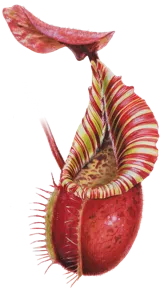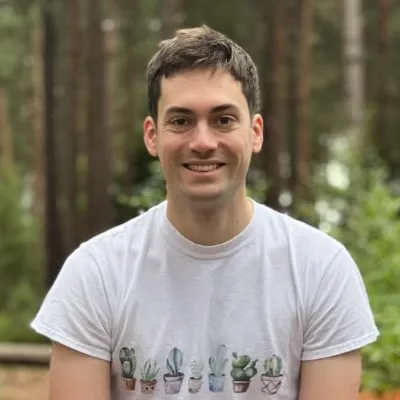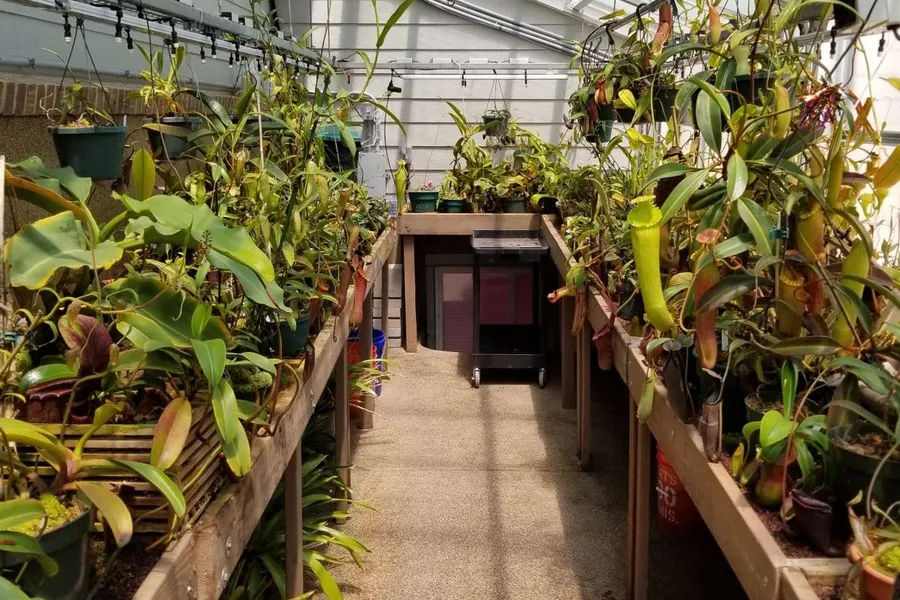Soon after my visit to Chester Zoo I got the chance to speak with US grower Dr. Jeff Shafer. Long-standing members of the CP community will probably remember Dr. Shafer from his website Plants With Attitude or the N. x briggsiana variety to which his name is often attached. He holds a doctorate in theoretical physics and has made numerous contributions to the ICPN’s journal, the Carnivorous Plant Newsletter.
More recently Dr. Shafer allowed me to reproduce his article on Nepenthes villosa cultivation using a chest freezer, and I featured him in my list of the top CP growers on Instagram (expect a follow-up to that article soon!). Obviously I didn’t pass up the opportunity to chat with him about his impressive collection and growing setup, and you can find our short Q&A below.
June’s been a Nepenthes-heavy month here at Tom’s Carnivores, so I’ll aim to write some more on Pinguicula, Drosera, and Sarracenia in the near future! I’m also planning to write an update on my tropical greenhouse, which I’m pleased to say has finally started construction; planning permission has at last been granted, so for the first time in my life I’ll have sufficient growing space (for a couple of years at least!).
Enjoy, and be sure to subscribe to Tom’s Carnivores for more articles like this.
When did you first start growing carnivorous plants?
I first became interested in CP back in 1971. In those days, the availability of such plants was nothing like it is today, and my first acquaintance with the subject came in the form of a comic book ad for “plants that eat meat”. It featured a garish, hand-drawn depiction of a VFT with blood red traps, and I was instantly hooked. Had to have it. The bulbs arrived a few weeks later, utterly devoid of traps, with very limited cultivation information, and I promptly killed them by failing to provide enough light!
That did not deter me, however, and I became even more interested in such plants when, in 1975, I was fortunate enough to run across a little book entitled Carnivorous Plants, by Randall Schwartz, in a local bookstore. It was this work which introduced me to such exotics as Heliamphora, Cephalotus, Pinguicula, Sarracenia and, of course, Nepenthes, which have ever since remained my primary focus. More importantly, the book also made me aware of a few nurseries where I could actually obtain a few such plants. From there, my interest took off.
Were you originally a windowsill grower? When did you first start growing in greenhouses?
Early efforts growing plants typically involved the use of aquariums, but I generally found that plants did not thrive, largely for want of light. This was, after all, the 1970s, and many of the horticultural lighting options available today simply did not exist. So, I began to grow VFT’s, mostly, on windowsills, with reasonable success, though due to the relatively dry climate where I lived, the plants were never as happy as they would have been with proper humidity.
Most of the Nepenthes I first grew in tanks, since their light requirements are not so profound, but when I got older and bought a house, I had the luxury of a real greenhouse, and also constructed a large, walk-in chamber in my basement, which was illuminated with a 1000W metal halide bulb. This made it possible for me to accommodate two radically different types of environments — one for lowland Nepenthes, and one for highland.
Over the years, as plants became available, I was able to obtain and grow most of the things I wanted to try. At this point in time, I’ve probably grown almost every known species of Nepenthes, with the possible exception of a few of the most newly discovered ones. Additionally, I’ve cultivated probably over 100 different kinds of Drosera, most of the Heliamphora, Cephalotus, Darlingtonia, Drosophyllum, and Roridula.
How large is your collection today, and how do you prevent it from growing exponentially?
I don’t know the exact number of plants, but there are hundreds. They are from many different sources - some commercial tissue culture, others cuttings I have purchased or acquired through trading.
It’s really difficult to keep it from exploding, but I do make and sell a lot of cuttings. I really haven’t considering starting a nursery - at least, not until I retire.
Click on any photo to zoom in. Use arrow keys or swipe to navigate.
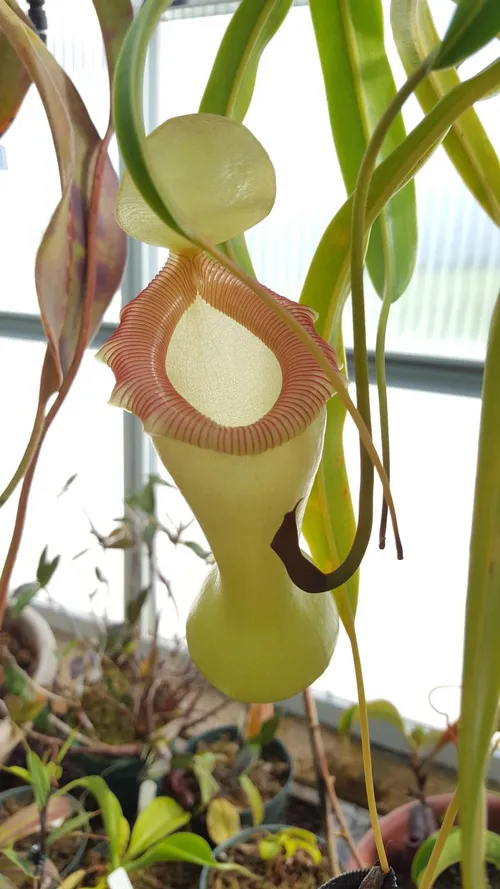 01. Nepenthes ventricosa porcelain
01. Nepenthes ventricosa porcelain 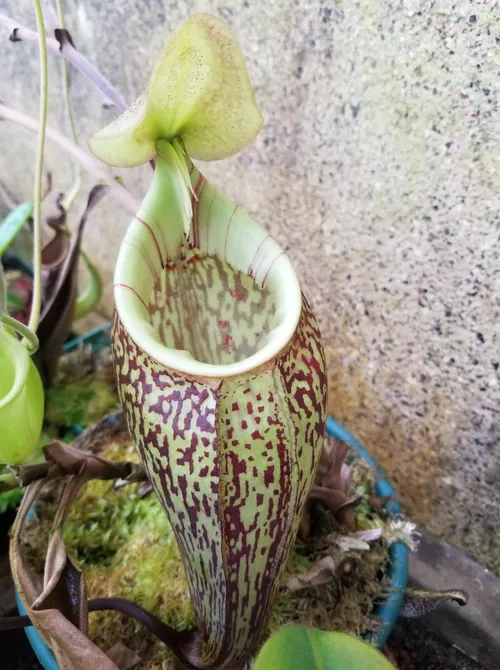 02. Nepenthes macfarlanei
02. Nepenthes macfarlanei 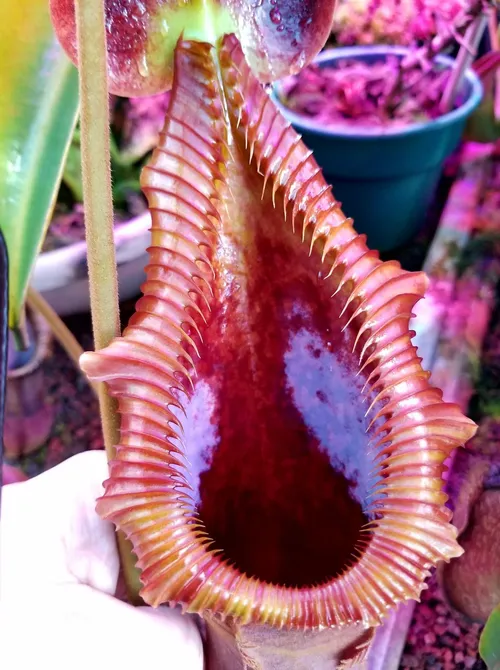 03. Nepenthes x trusmadiensis
03. Nepenthes x trusmadiensis 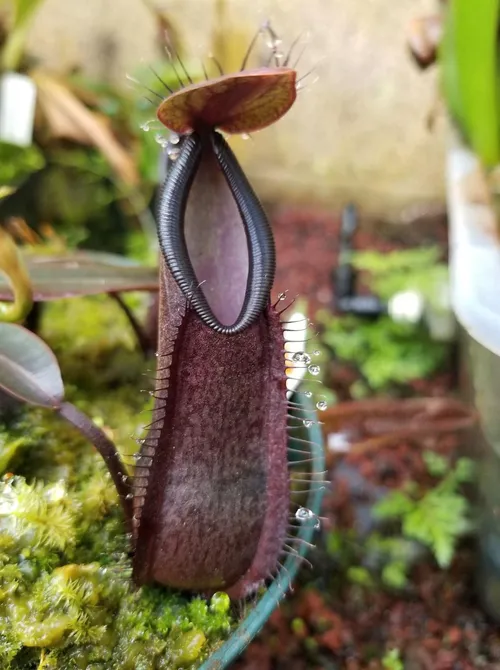 04. Nepenthes tentaculata
04. Nepenthes tentaculata 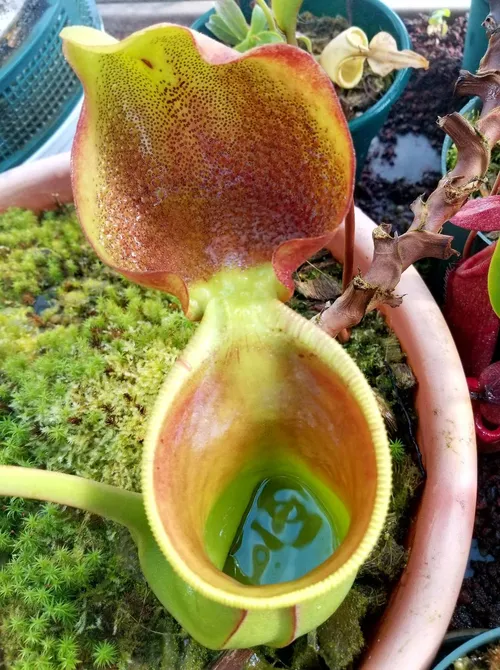 05. Nepenthes ephippiata
05. Nepenthes ephippiata 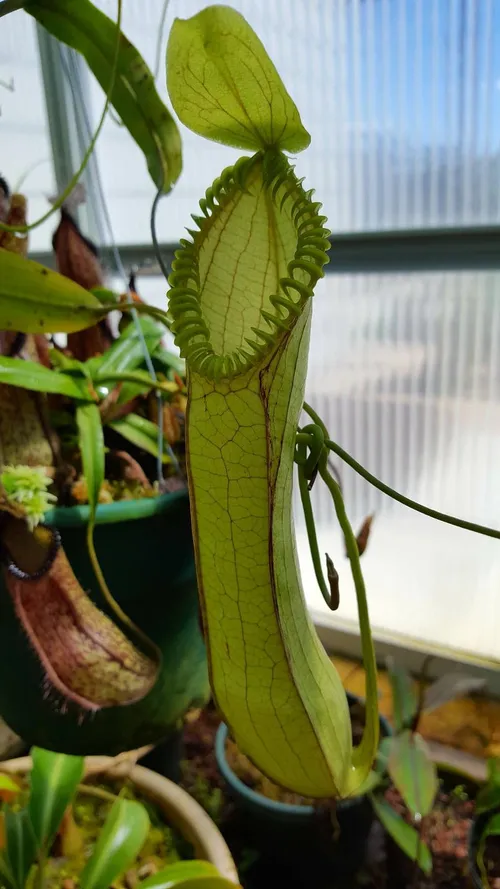 06. Nepenthes hamata upper pitcher
06. Nepenthes hamata upper pitcher 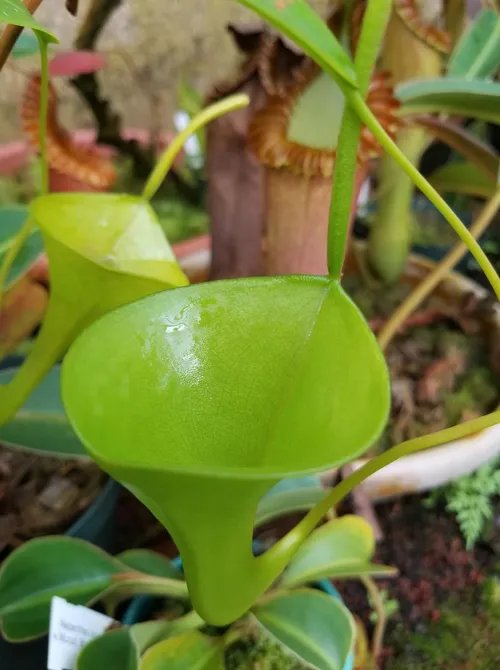 07. Nepenthes inermis upper pitcher
07. Nepenthes inermis upper pitcher 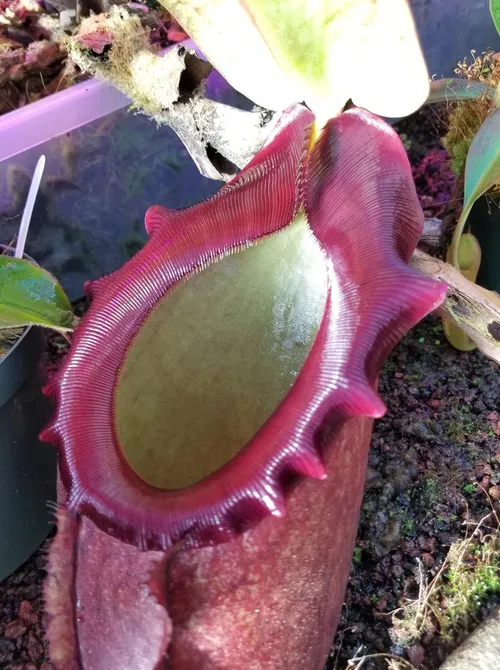 08. Nepenthes rajah
08. Nepenthes rajah 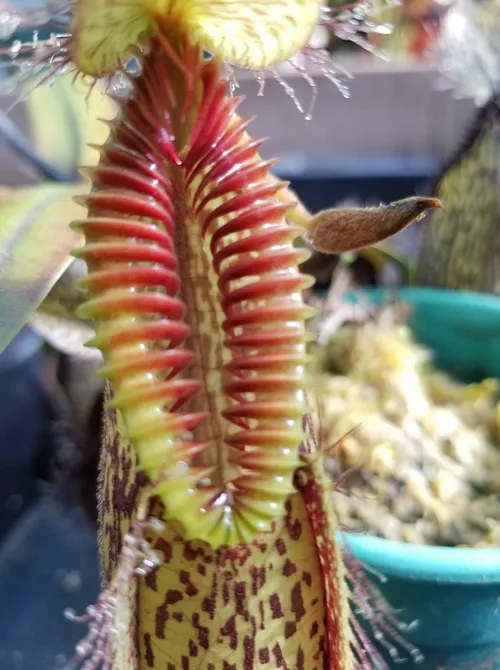 09. Nepenthes hamata
09. Nepenthes hamata 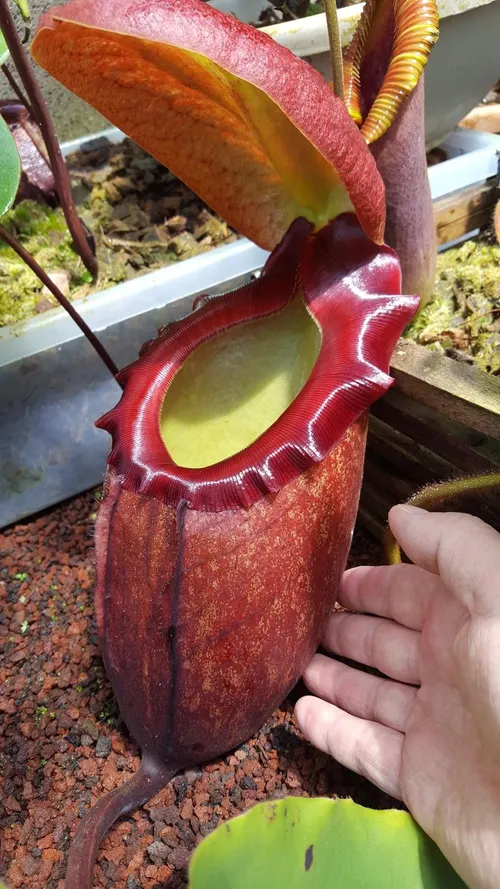 10. Nepenthes rajah
10. Nepenthes rajah 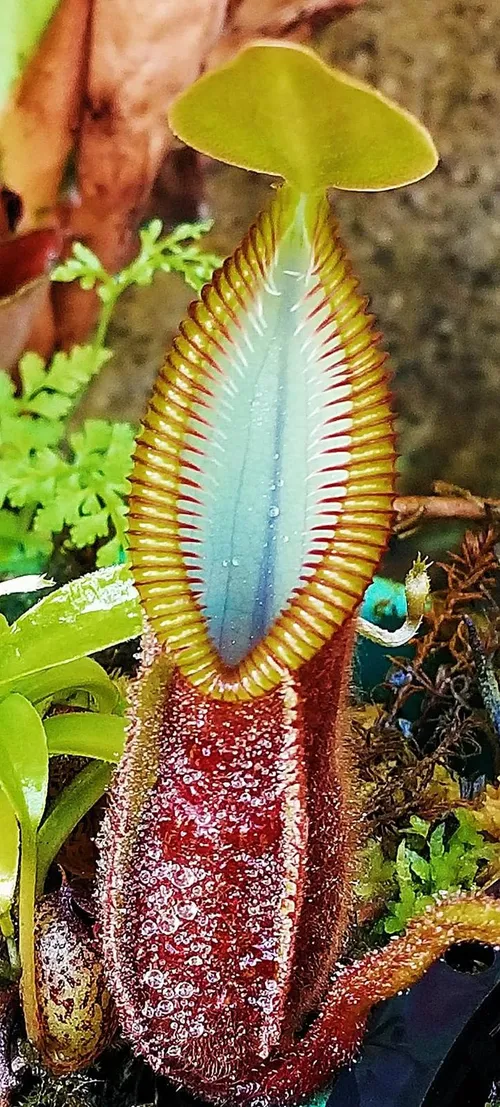 11. Nepenthes hamata red hairy
11. Nepenthes hamata red hairy 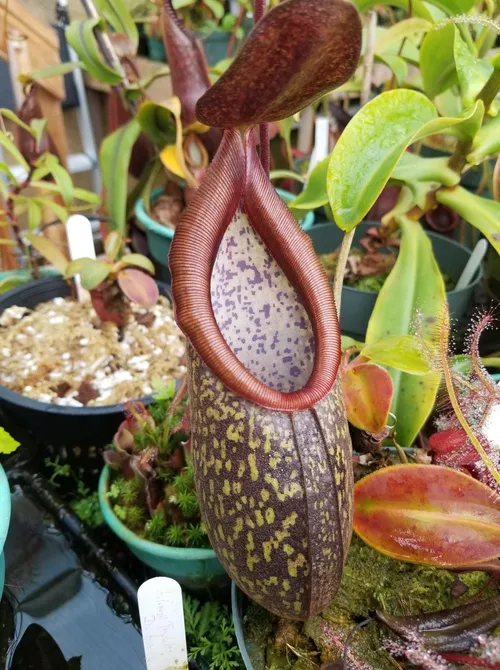 12. Nepenthes rigidifolia
12. Nepenthes rigidifolia 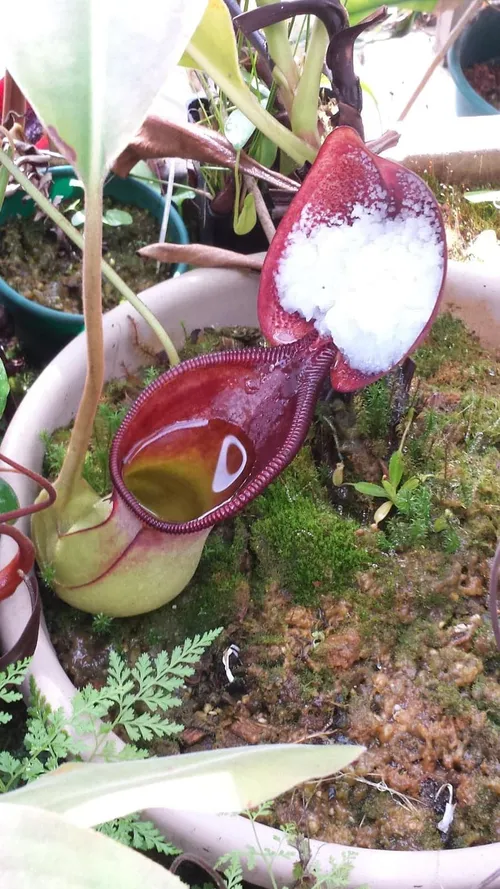 13. Nepenthes ephippiata
13. Nepenthes ephippiata 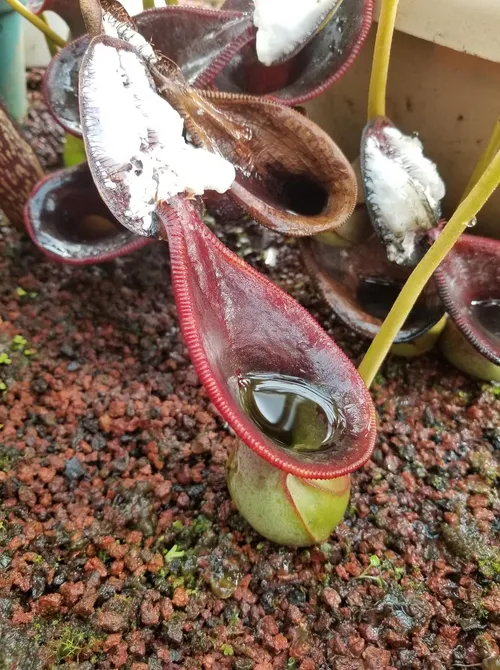 14. Nepenthes lowii
14. Nepenthes lowii 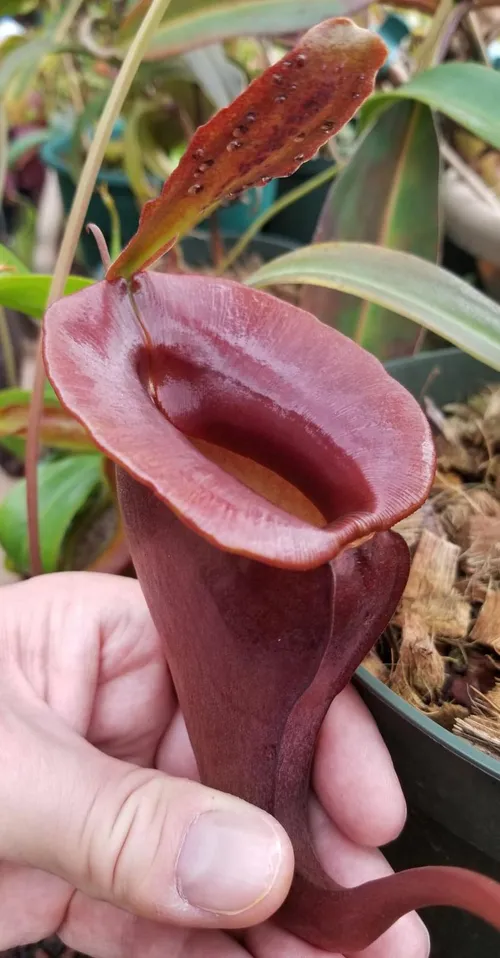 15. Nepenthes jacquelineae
15. Nepenthes jacquelineae 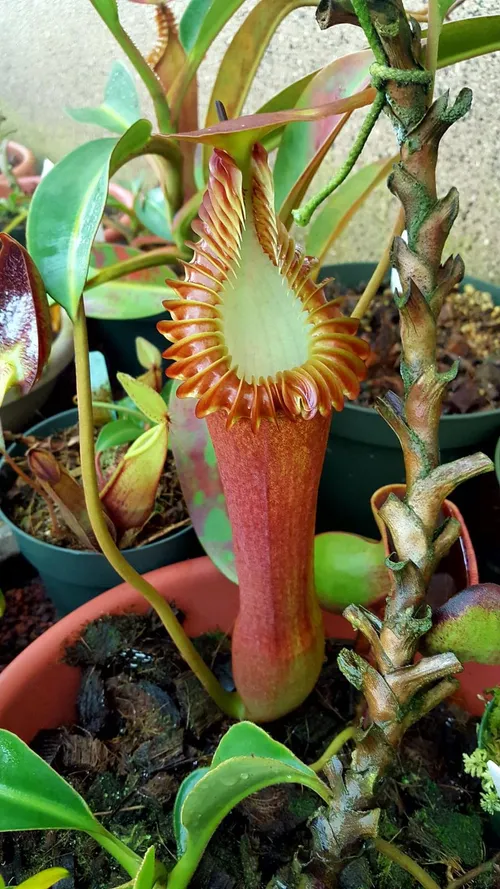 16. Nepenthes edwardsiana
16. Nepenthes edwardsiana 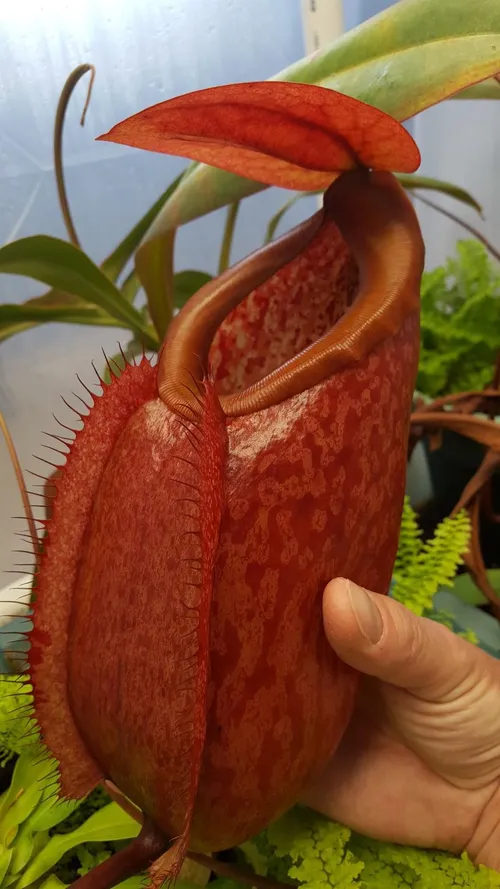 17. Nepenthes merrilliana
17. Nepenthes merrilliana 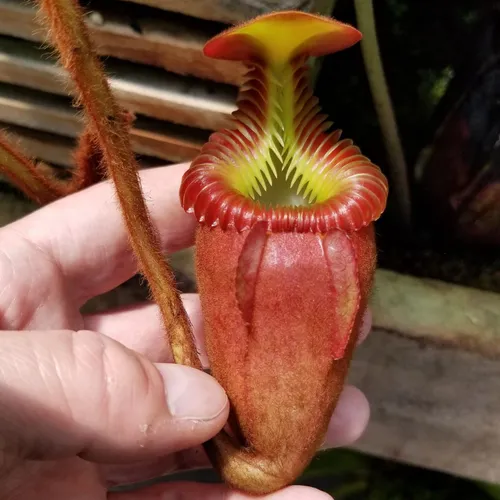 18. Nepenthes villosa intermediate pitcher, with wings only halfway down
18. Nepenthes villosa intermediate pitcher, with wings only halfway down 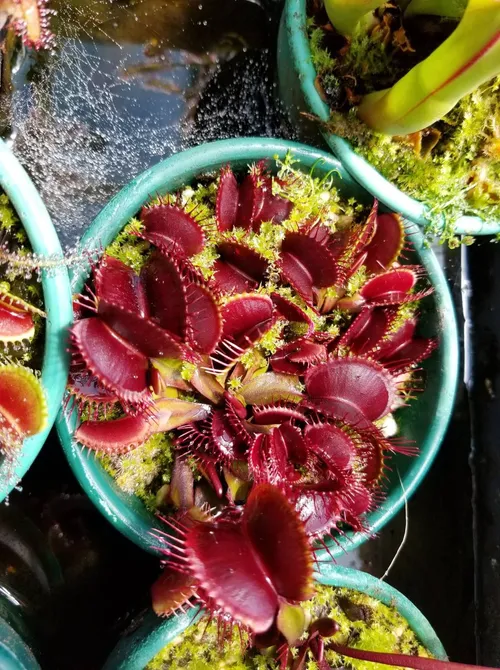 19. Dionaea muscipula, the Venus flytrap
19. Dionaea muscipula, the Venus flytrap 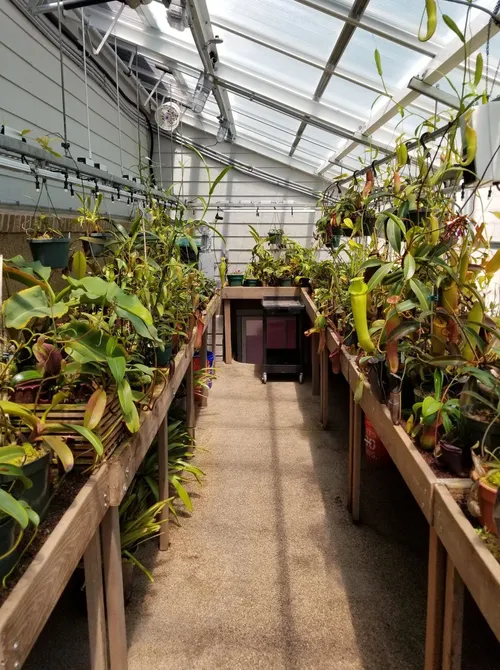 20. The Nepenthes jungle
20. The Nepenthes jungle Do you cross your flowering plants? Do you have any preference for species or naturally-occurring hybrids over artificial crosses?
I do make Nepenthes hybrids, but primarily restrict my attention to making the “toothier” ones, using the rare ultra-highland species, or crosses involving N. rajah or N. lowii. I also am very interested in producing species seed, and have done so, or have it in the works, for several species.
Always a contentious subject, but do you have a go-to potting media for Nepenthes? Have you ever tried inorganic substrates like akadama and kanuma?
I’ve found that the plants will grow in almost anything, provided that it is generally acidic and drains well. For example, for a number of years, everyone claimed that N. northiana was virtually impossible to grow, and that this was due to some unique aspect of its growing medium. However, what I found is that N. northiana will grow fine in almost anything, but it requires very stable conditions. Currently, I have a very large female plant that has been growing for 22 years, and has flowered.
I have tried inorganic substrates and found them to work reasonably well. I have also used fired clay balls, such as Hydroton.
In general, though, I use coconut husk, but one must use this with caution. In processing, it is soaked in seawater, and typically has a significant amount of residual salt which must be leached prior to use. Failure to do this will kill plants. So, this material must be soaked for a couple weeks, with repeated changes of water, for it to be safe. I usually use a conductivity meter, and aim for the effluent to have a conductivity of 100 microsiemens per cm, or less.
Are you a member of the ICPS or of any other societies?
I’ve been a member of the ICPS before, but let my membership lapse a number of years ago. It’s a nice journal; I’m just so busy most of the time now that it’s hard to find time to read it. Additionally, I have been out to California for a few meetings of the BACPS, which are really great.
You mentioned Nepenthes were your primary focus - why are you drawn to this genus in particular? And are there any specimens in your collection you’re particularly fond of?
Nepenthes are very unusual plants. I suppose that there’s something monstrous about them, and that’s why I like them. My favorites are the very exotic highland plants, really, though there are too many wonderful species to mention!
Anything else you’d like to share?
One other interesting tale: in the mid ’90s, I joined an online service, known as the CP Listserver. This was a subscription-based email service which one could join, and any email addressed to the server would then be relayed to all other subscribers. Shortly after joining, I got a reply from someone living about 20 miles away, and we ended up conversing and finally met. That person became my wife, and we have now been together for 23 years!
So, looking back over my nearly 50 years of interest in these plants, I have to say that they’ve been a source of constant fascination, and have really enriched my life, in a number of ways!
Many thanks to Dr. Shafer for taking the time to speak with me and for sharing photos of his collection. Be sure to follow Jeff on Instagram or visit his website nepenthesgod.com for more shots of his awesome plants.
